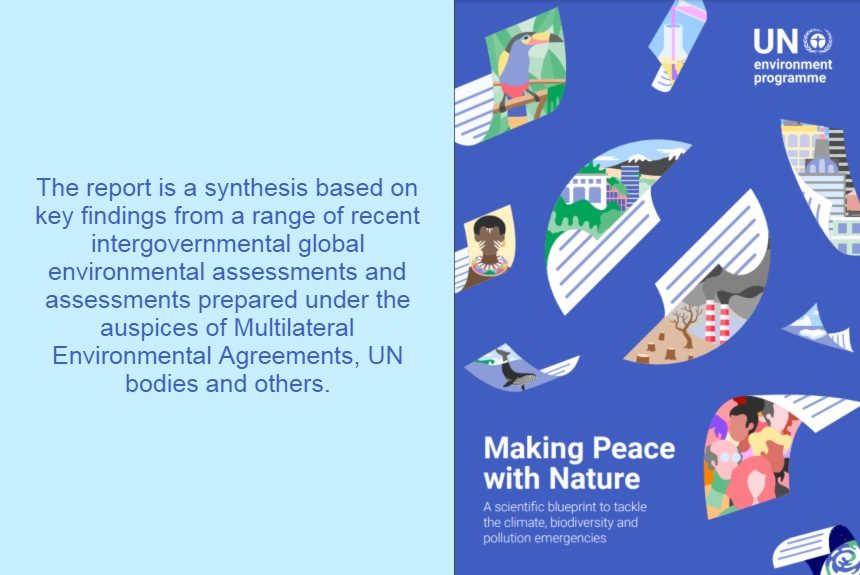A scientific blueprint for tackling the climate, biodiversity and pollution emergencies
The United Nations Environment Programme’s 160+page report presents a scientific blueprint to tackle climate change, biodiversity loss, and pollution within the Sustainable Development Goals framework.
The report is a synthesis based on key findings from a range of recent intergovernmental global environmental assessments and assessments prepared under the auspices of Multilateral Environmental Agreements, UN bodies and others.
A foreword messages from António Guterres, UN Secretary-General and Inger Andersen, UNEP Executive Director, emphasise the growing existential threat of climate change to the world. Both of them say that our present systems are unsustainable and damaging the environment that will ultimately affect us.
According to Mr Gutteres, there is an urgent need to transform our relationship with nature. The latest scientific evidence on climate change shows the damages it is causing to our planet and, eventually, our well-being. Transformation is needed across all systems to restore nature while incentivising actions that promote these changes.
According to Ms Anderson, “decades of relentless and unsustainable consumption and production are amplifying deep inequalities and threatening our collective future” and driving the three interconnected planetary crises – the climate, pollution, and natural crisis.
The report makes a robust scientific case for urgent collective action in restoring our planet. It outlines how we can “repair” our world through transformative efforts, human ingenuity, and cooperation.
The report contains two parts.
Part 1
- Transforming nature puts human well-being at risk and underscores how our current development mode degrades the Earth’s finite capacity to sustain human well-being.
- It shows how the assessments’ findings are interlinked and revealed the unparalleled environmental and climatic emergency that we are in.
- It shows the following conclusions:
- society is failing to meet the Paris Agreement – we are not on track to limit global warming below 2C;
- we are not on course to stop land degradation, and pollution and wastes are not managed safely;
- there is a need for international agreements to restore our ozone layer, and the continuing environmental degradation will impede the achievement of SGD.
Part 2
- Transforming humankind’s relationship with nature is the key to a sustainable future.
- It gathers all the scientific evidence from part one and uses it to make a concrete and significant recommendation that various actors can take up across society.
- Human knowledge, ingenuity, technology, and cooperation can transform communities and economies and secure a sustainable future.
- It discusses how addressing the Earth’s emergency is linked to achieving the SGD, the need to transform economic, production, and financial systems to keep our planet healthy.
- Each one – from the national governments, including its three branches, to intergovernmental organisations, to financial, private, and non-governmental organisations, to individual households, and local communities has a role and responsibility to transform humankind’s relationship with nature.
- Part 2 identifies eight Key Areas for Transformative Change and five ‘Levers’ or strategies to achieve a sustainable future.
Transformative changes include shifts in paradigms and visions of a good life that favours relationships with people and nature over material consumption, reducing per capita consumption and waste, unleashing capabilities and relational values to drive actions, and reducing inequalities around income, race, and class, transforming technology and innovation that will reduce waste and emissions, and use of knowledge and education that promotes sustainability.
The ‘levers’ or strategies to achieve these changes includes fixing the “carrots and sticks” approach, which entails changing the incentive structures and broadly reforming subsidies to shift from enhancing harmful production practices towards those that directly improve a suite of social and environmental well-being.
The ‘stick’ refers to the environmental laws and policies that need strengthening and ensuring consistent enforcement and eliminating corruption.
To view the entire report, click the link below:
Source:
United Nations Environment Programme (2021). Making Peace with Nature: A scientific blueprint to tackle the climate, biodiversity and pollution emergencies. Nairobi. https://www.unep.org/resources/making-peace-nature



Leave a Reply